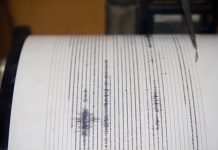As humankind has expanded its reach, wildlife and the natural world have retreated. Only recently have we realized that it is in our power to exhaust the resources of a world we once thought limitless. What we had previously struggled to conquer, now needs to be saved.
So, we started setting aside parks and preserves, isolated chunks of land where we pledged to keep our touch light so that ecosystems could carry on somewhat as they had before. But as our understanding broadened, it became clear that relegating wildlife to fragmented habitats came at a cost. Our parks and preserves are essentially islands, and islands have always suffered high rates of extinction. For a jumble of intertwined ecological reasons, isolating wildlife populations in this way degrades habitats and weakens their chances for survival.
Today conservation biologists strive to create linkages between isolated wildlife habitats. It sounds like work just for scientists working with wolves and grizzly bears in Yellowstone, but local biologists are revealing wildlife corridors we cross nearly every day.
Below San Francisco, we call the Santa Cruz Mountains the peninsula hills. Across the bay, we call the Diablo Range the east bay hills. On their journeys south, these two ranges slowly converge until they reach Coyote Valley where they are barely two miles apart. Two distinct habitats, very close together, with relatively open terrain between them: What critters, if any, are crossing between them, and how are they doing it?
Local wildlife ecologist, Tanya Diamond, and her partner, Ahiga Snyder, formed Pathways for Wildlife, a research organization that identifies wildlife pathways, then implements and monitors connectivity designs that facilitate the movement of wildlife between divided habitats.
Tanya literally bubbles over with enthusiasm when she shares her Coyote Valley discoveries. On a recent hike at Coyote Valley Open Space Preserve, Tanya and Ahiga told me about the network of motion sensitive field cameras that have captured bobcats, grey foxes, coyotes, deer, and other mammals traveling daily along the Fisher Creek corridor, then through culverts and under bridges to reach the east side of the valley. While prior studies pinpointed various Highway 101 crossing points, Tanya and Ahiga have identified the routes these animals take across the valley floor—important new information.
Their research also confirmed the presence of juvenile animals showing that Coyote Valley is not just a critter throughway. It is a living habitat where animals den, breed, and a place where juvenile animals disperse in pursuit of a mate. I was surprised to learn that the main hindrance to travel between the ranges is not Highway 101, but Monterey Road. The highway has various culverts and overpasses, while along much of Monterey Road, there is a concrete divider topped with cyclone fencing that is virtually impossible to cross even for deer.
My trips north from my Morgan Hill home have changed. I always enjoyed Coyote Valley for the winding riparian forest along Coyote Creek and the spacious open vista. That was good enough. But now, as I barrel along in my climate controlled capsule, I realize I am traversing a bustling hub of activity; animals that have been here for millennia are all around me trying to make a living in the space we have left them. As the pressure for development grows and we consider the future of Coyote Valley, planners and citizens should be aware of the vibrant wildlife activity Tanya and Ahiga have discovered there.
Information about the Coyote Valley Linkage Assessment Study, including the full report, is available at the Santa Clara County Open Space Authority website (www.openspaceauthority.org).










